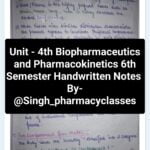GPAT ONLINE CLASSES
In collaboration with A.P govt.
PHARMACEUTICAL
ENGINEERING
Presented by
DR. T.E.GOPALA KRISHNA MURTHY
Professor & Principal
Bapatla College of Pharmacy
Bapatla, Andhra Pradesh.
Topics going to cover in this session
5. Drying
6. Size reduction and size separation
7. Extraction
8. Mixing
Moisture content
• Bound moisture and free moisture
weight of water in samplex100
• % moisture content=
weight of dry sample
• If exactly 5 g of moist sample is brought to a constant dry weight of
4g, calculate loss on drying and moisture content
• Percent MC is more realistic value in determination of dryer load
capacity
• Equilibrium moisture content depends on
– Temperature and humidity of air
– Properties of the material
Mechanism of drying
• Involves both heat and mass transfer
• Rate of evaporation is related to rate of heat
transfer as
dW/d∅=q/ƛ
• The rate equation for mass transfer
dW/d∅=KA (Hs-H g )
Rate of drying & Time of drying
Classification and types of dryers
Tray dryer & Fluidised bed dryer
Freeze dryer
• Pressure 10- 30 N/M2
• Temperature -10 to -300c
• Composed of
– Vacuum drying chamber
– Vacuum source
– Heat source
– Vapour removal source
Stages involved in freeze drying
• Vacuum
• Primary drying
• Secondary drying
Spray drying
• Feed delivery systems
• Atomizer (pneumatic, pressure nozzle, spinning disc)
• 7000 psi and 3,000 to 50,000 rpm
• Heated air supply
• Drying chamber
• Solid- gas separator
• Product collection system
Contents
• Objectives
• Factors affecting size reduction
• Laws governing size reduction
• Classification of mills
• Hammer mill
• Ball mill
• Fluid energy mill or ultra fine grinder or micronizer
• Quadroco mill
• Multi mill
Objectives
• Dissolution and therapeutic efficacy
• Extraction
• Flow ability
• Mixing
• Formulation
Factors affecting size reduction
• Nature of material
– Hardness, toughness, abrasiveness, stickiness, material
structure, bulk density, physiological effect Particle shape,
Polymorphism
• Moisture content
• Temperature
• Feeding rate
• Purity required
Laws governing size reduction
Y
• Griffith Equation T =
D
• Kicks Law E = CIn 1
D2
• Rittinger’s Law E = k1(S2 − S1)
• Bond’s Law Wt1/ D2
• Holme’s Equation 1 1
Wt =10Wi −
D2 D1
Classification of mills
Hammer mill
• Impact mill using high speed rotor up to 10000 rpm with a peripheral speed
up to 7600 meter per minute
• Dry materials, wet filter press cake, wet granules, ointments and slurries
• Size reduction up to 20 to 40µ
• Circular hole design for fibers and herringbone design for crystalline
materials and continuous operation jump- gap screen for abrasive and
clogging materials.
• Micro pulverizer for nonabrasive materials
Ball mill
• Both wet and dry grinding, up to 10µ
• Pebble, rod mill, tube mill and Hardinge mill
• Sliding, cascading and centrifuging
• The critical speed is n=76.6/D
• Optimum diameter of the ball= D 2
ball =KD (feed particle)
Fluid energy mill or ultra fine grinder
or micronizer
• Air or steam at pressure of 100- 150 psi
• Particle size to 1-20µ
• Feed should be pre milled to 20 to 100 mesh
• Nozzle design and direction of air jets
• Efficiency of air compressors
• Efficiency of filters and separators
Quadro co mill
• Control feed product into upper conical screen chamber
• A rotating impeller calibrates incoming material
• Calibrated product then passes through to the lower chamber
• A second intensifying impeller accelerates the particles.
• Particles are continuously delivered to “action zone” between
screen and impeller
• Particles are size reduced (as fine as 150 micron) and instantly
discharged through screen openings
Multi mill
• Multi mill machines are widely used for
wet and dry granulation, pulverization etc.
• SS beaters having knife and impact edges
rotate within a selected screen
• The material fed in the hopper enters into
the processing chamber where it moves
to the pentery and passes through screen
• Output & quality of final products depend
on (I) shapes of beaters (Knife/ impact
edge) (ii) speed (iii) size of screen
• Theory of Extraction
• Extraction methods
• Equipment for extraction
• Liquid- liquid extraction
– Podbielniak extractor
• Solid- liquid extraction
– Knowledge on botanical structure
– Differences in active constituents
– Different forms of insoluble matter
– Mixture of components
– Microbial growth
Theory of Extraction
Size reduction
Penetration of the drug by solvent
Solution of the soluble matter within the cells
Escape of removable material through the cell walls
Separation of solution and the exhausted drug
Examples
• Sliced/bruised condition for soft drugs such as gention
• Coarse powder for belladonna
• Moderately fine powder for hard and woody drug ipecacuanha
• The cohesive forces of cellulose form micellae
• Vacuum is used to remove air from the pores of the drug
• The solvent would be cheap, non toxic, stable and selective
Extraction methods
• Maceration
• Percolation
• Reserved percolation
• Cover and run down method
• Conical vs cylindrical percolator
• Significance of imbibition in percolation
• Role of filter paper and sand on the surface of packed drug
Equipment for extraction
• Extraction battery
– Represents drug/ solvent ratio 1:1
– If N vessels are used, the drug receives 2N-1 extraction stages
Soxhelt apparatus
Rotocell extractor
Bonotto extractor
• Theory of mixing
• Solid- solid mixing
• Convective mixing
• Shear mixing
• Diffusive mixing
Convective mixing
Shear mixing
Diffusive mixing
Solid- liquid mixing
• Pellet and powder state
• Pellet state
• Plastic state
• Sticky state
• Liquid state
Liquid- liquid mixing
• Bulk transport
• Turbulent mixing
• Laminar mixing
• Molecular diffusion
Laminar mixing Turbulent mixing
Mixing equipment
Solid mixing equipment
• Tumblers/Blenders
• Agitator mixers
• Continuous mixers
Tumblers/Blenders
• Twin- shell (v shape)
• Double cone
• Drum
• Cube and tetrahedral blenders
• Twin shell blender is commonly employed
• Bulk transport and shear
• May consists of baffles and agitator
• Depends on speed of rotation ( 30-100 rpm)
• Rpm depends on size; shape of the tumbler and on the type
of material
Agitator mixers
• Mixing by means of • Fluidized air mixer
moving screws, paddles • RMG
or blades
• Lodge mixer
• Mixing of wet, sticky or
• Diosna mixer granulator
plastic solids
• Gral mixer granulator
• Ribbon mixer/ blender
• Planetary mixer
• Nauta mixer
Continuous mixers
– Zig- zag continuous blender
– Blendex
– Barrel type continuous mixer
Solid – liquid mixing
• Segregation or demixing
• Particle size, shape, density and charge
– Kneaders (Agitator mixers )
– Mills (shear mixers)
– Ultrasonic mixers
Liquid mixing
• Impellers
• Jet mixers
Impellers
• Propellers • Turbines
– Three blade designs is – Radial flow
common – Diffuser ring may be fitted
– Primary effect is axial flow – Deal up to 100 N/m2
– Up to 8000 rpm
• Paddles
– Propeller to container ratio is
• Large surface are with 50
1:20
rpm
– High speed with low viscous
fluids (<5N/m2) • Primarily tangential
Jet mixers
• Air jets
• Liquid jets
– Vortex formation and prevention
• Offset
• Angled
• Side- entering
• Push- pull
• Baffled
@ UNIVERSITY LINK










